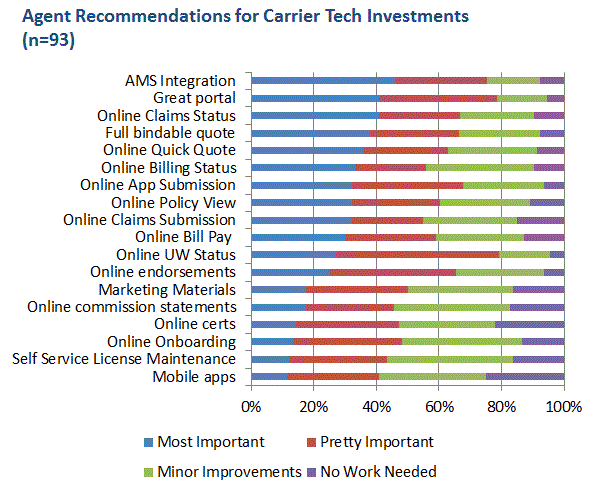Driving Growth by Optimizing the Property Casualty Agent Experience
Abstract
Most carriers in North America work with independent agents. Although the majority of premium for personal lines is written direct, that is largely concentrated in a few large carriers. Carriers who use independent agents know that high production from agents is correlated with strong relationships. However, beyond encouraging a strong personal relationship with an underwriter, what else can a carrier do to systematically build a stronger connection with an agent and grow their book? Celent surveyed a group of agents to understand those areas most likely to make a carrier the agents’ top choice.

Key findings in the report include:
- It is easy to think that price is the most important factor when it comes to where an agency chooses to place business. While competitive products and price certainly are important, the responsiveness of the underwriter is paramount. A fast underwriting decision is also a significant factor, with over 60% of agents stating this is a must-have.
- Money matters to agents, although the specific components are not essential to all agents. The most important component is commissions. Interestingly enough, 40% stated that the commission rate does not necessarily have to be competitive. Only 30% said incentive compensation programs were must-haves, and 40% said they were “nice to have” or didn’t matter at all.
- Beyond that, agents also look for support in other areas. A strong brand is important, because it is easier to sell a company where the prospect already has an emotional connection. Marketing, training, and consulting support are seen as important by more than half the agents, especially younger agents who may benefit more from these types of services.
- Mobile tools and social media support are generally not seen as important items to most agents, but there is a significant generational difference here. Twenty-five percent of younger agents see mobile as a must-have compared to 4% of those over 60. Generational differences will become more important to carriers as Baby Boomer agents increase their rate of retirement and are replaced by GenX and Millennial agents.
- Agents want carriers to invest in those tools that are most important in helping them perform their job of writing business and providing customer service to the policyholder. Most important to agents is continuing to build out both the integration with the agency management system and expanding the functionality of the portal. Least important to agents are features such as mobile apps, online certificates of insurance, online commission statements, and access to marketing materials.

“Looking ahead, the industry is likely to continue to experience increasing channel complexity and increasing regulation, which means there are opportunities both to improve the agent experience and to reduce costs along the way,” says Karlyn Carnahan, a research director with Celent’s Insurance practice and author of the report. “Carriers who are looking to drive growth by improving the agent experience should start by looking at their technology offerings and making sure they are delivering the functionality that is most important to their agents.”
This report presents the results of an online survey conducted during May 2015 of independent insurance agents.
This report contains 13 figures and one table.

